Art & Design
Curriculum Leader: Ms L McConville - mcconvillel@saintgeorges.kent.sch.uk
Creativity takes courage
henri matisse - french visual artist
Art can allow us to interact with the world around us, it can help us to look inward and outside ourselves to make meaning of what we experience and to express our understanding of it. The study of Art at KS3 can create new ways of seeing, thinking, doing and being.
View our Learning Journey for Art and Design here
Intent
Our Art and Design curriculum at KS3 aims to build the confidence of all students. We will encourage students to be individual in their approach, producing creative work, exploring their ideas, and recording their experiences. We will support them as they develop skills in drawing, painting, sculpture and other art, craft and design techniques.
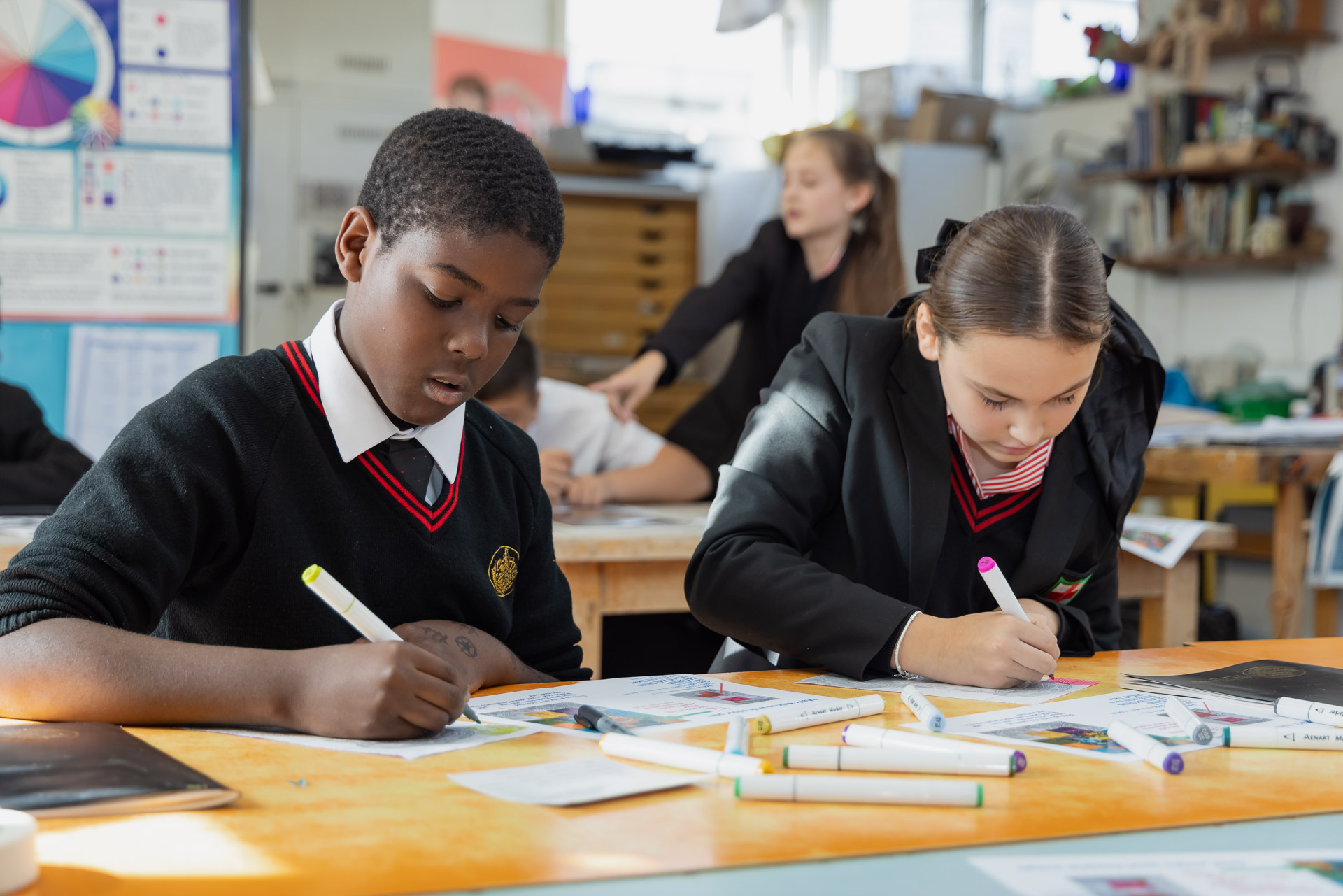
Implementation
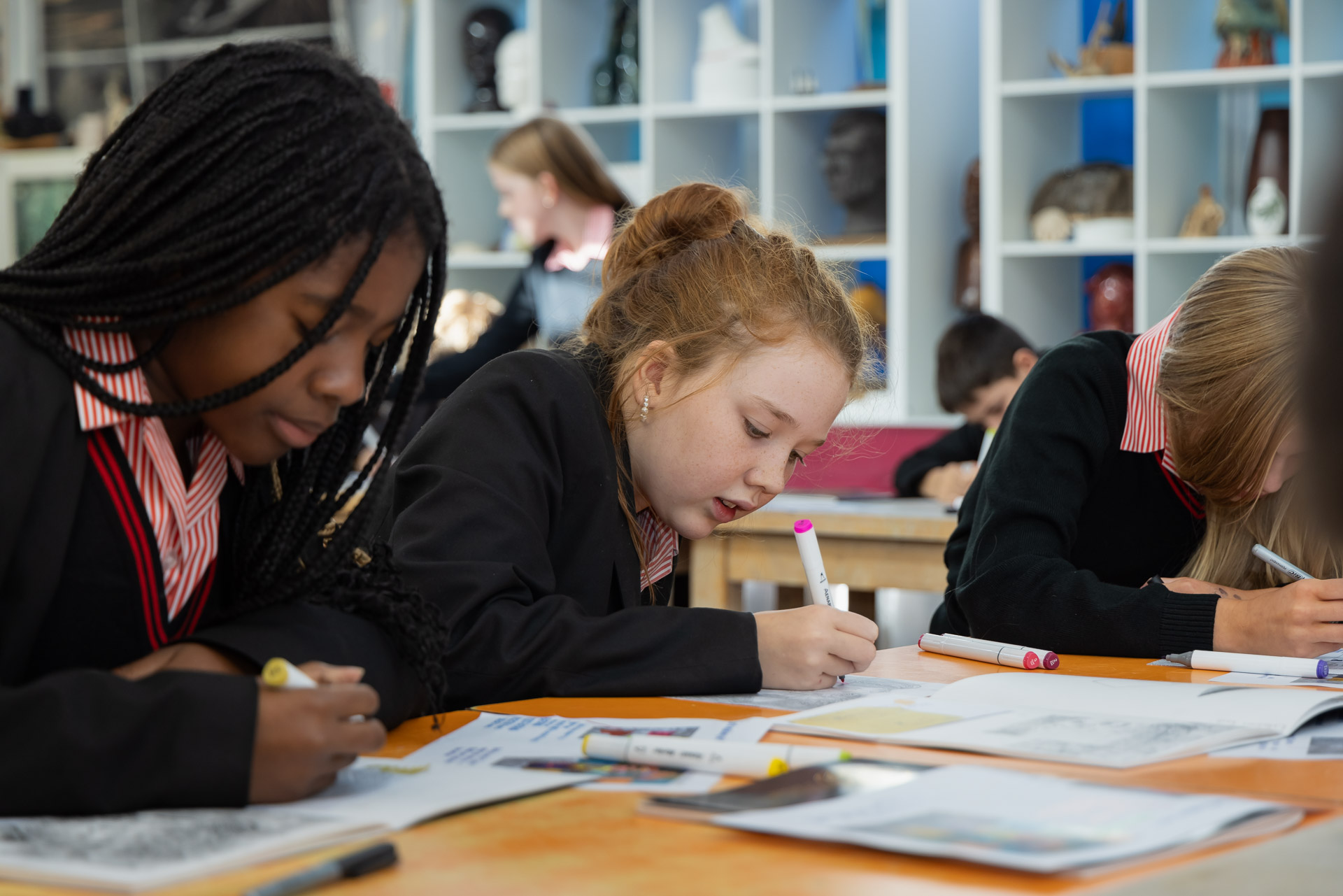
We ensure that SEND and disadvantaged children are given the necessary support in class to access the Curriculum fully and that equal opportunities are given to all.
Impact
The basic principles taught in Years 7 and 8 are further developed in Year 9 when students select taster options; Fine Art, Graphics or 3D Art which will support them to prepare for their chosen GCSE course at KS4.
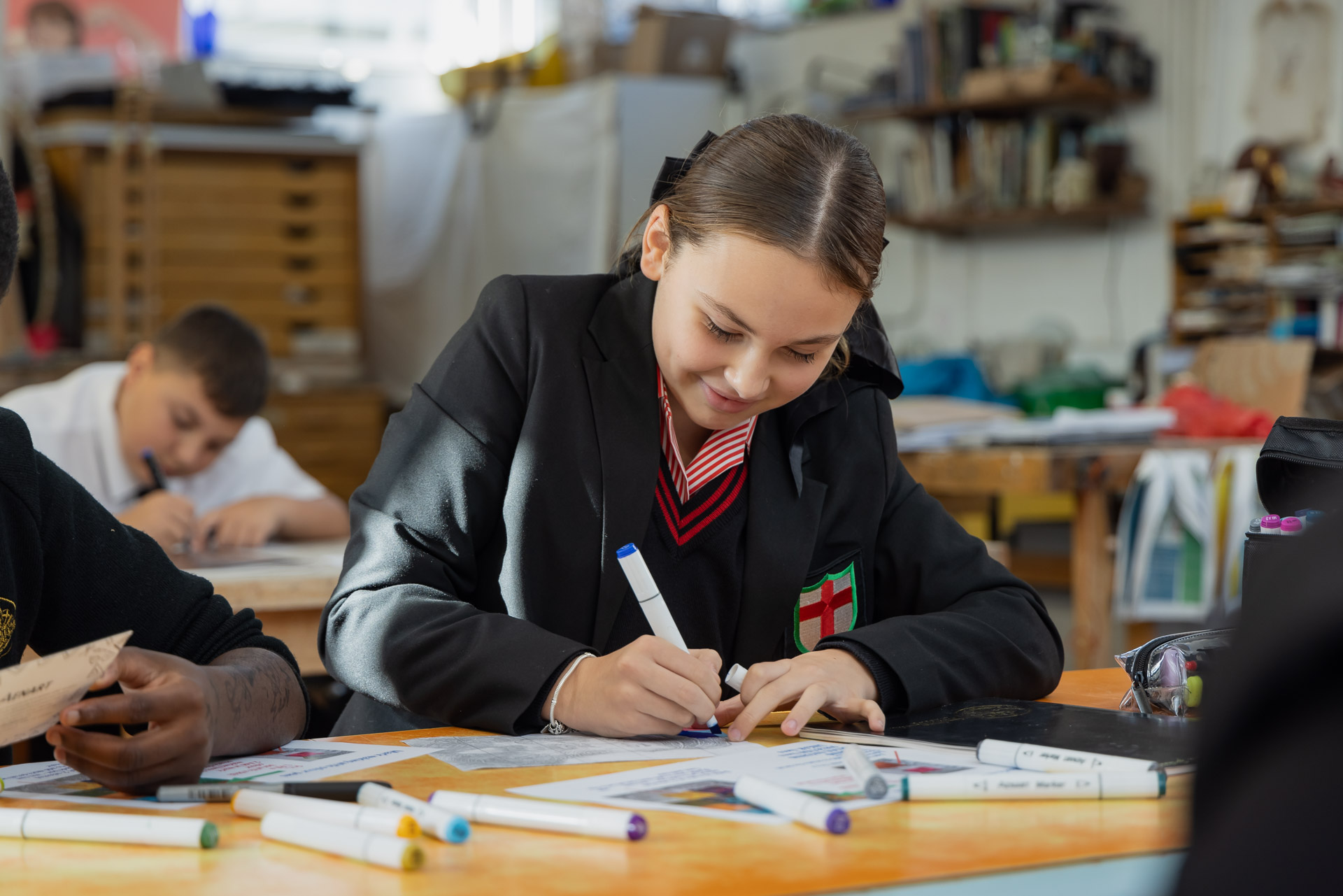
Art and Design at Key Stage 3 (KS3)
Fortnightly Lessons:
Year 7 – 3 lessons
Year 8 – 3 lessons
KS3 Art lessons aim to ensure that all pupils:
- Produce creative work, explore their ideas and record their experiences
- Develop skills in drawing, painting, sculpture and other art, craft and design techniques
- Evaluate and analyse creative works using the language of art, craft and design
- Know about great artists, craft makers and designers, and understand the historical and cultural development of their art forms.
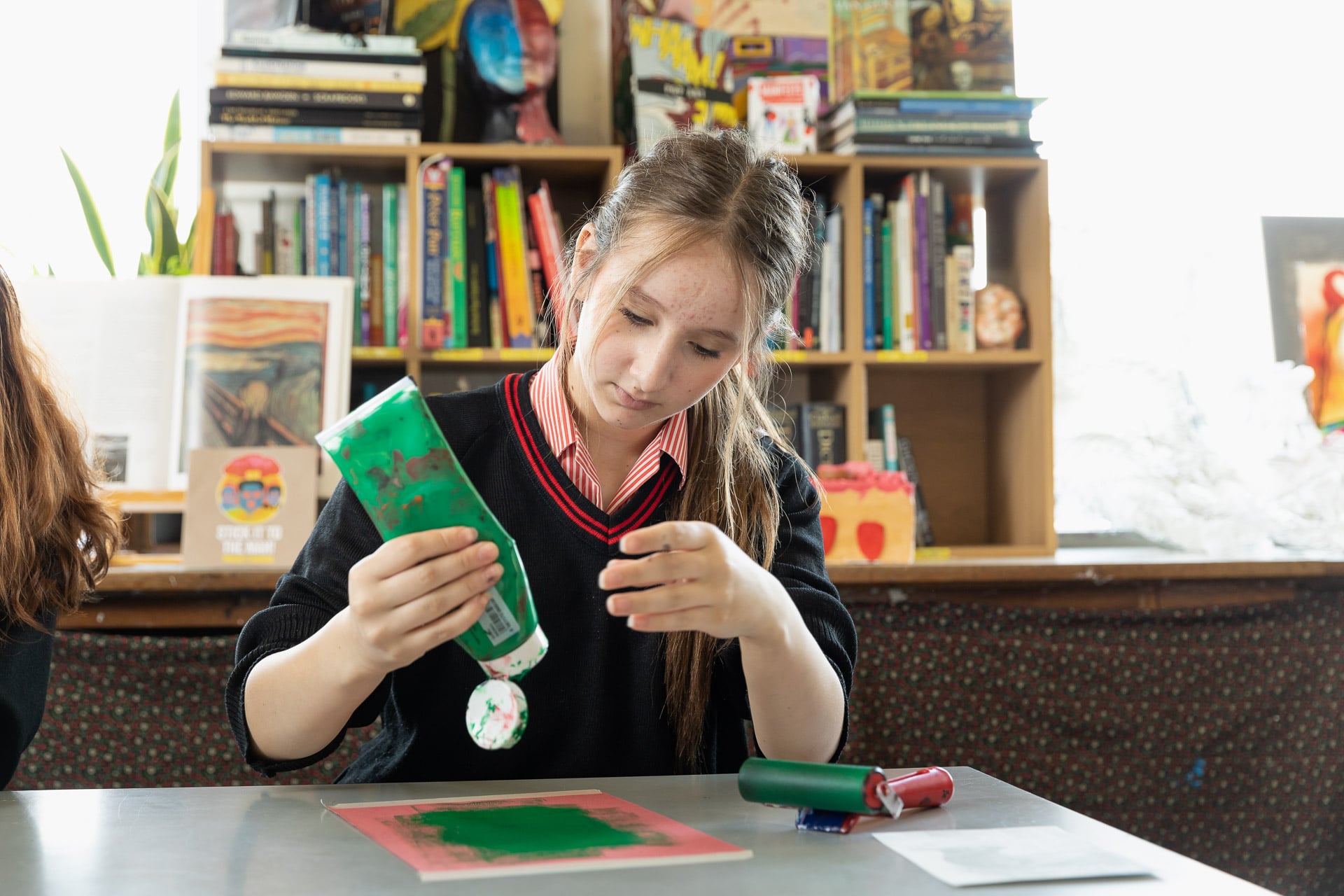
| Terms | Year 7 | Year 8 | Year 9 |
|---|---|---|---|
|
Autumn Term |
Mark-Making
|
Composition
|
In year 9, Art, Ceramics and Graphics are offered as part of the taster rotation. |
|
Spring Term |
Colour
|
Colour and Shape in Art
|
|
|
Summer Term |
Pattern and Textures
|
Exploring Other Cultures
|
Art and Design in Key Stage 4 (KS4) - Fine Art
Fortnightly Lessons:
Year 10 – 5 lessons
Year 11 – 5 lessons
The Art and Design course will allow students to explore and develop their drawing and painting skills. Fine Art practice is defined as the need to explore an idea, convey an experience or respond to a theme or issue of personal significance. It can also include aspects of mixed media, sculpture, printmaking, installation and photography. Some students may at times have the opportunity to use film, video and image manipulation in Photoshop. Students may also have the opportunity to explore sculpture and environmental art.
Areas of Study include:
- Drawing
- Painting
- Sculpture
- Photography
- Printmaking
- Mixed Media
Art and Design in Key Stage 4 (KS4) - Graphics Art
Fortnightly Lessons:
Year 10 – 5 lessons
Year 11 – 5 lessons
This course will allow you to build on creative graphic design skills taught in KS3 art and design and graphics. You will use both a workbook/ sketchbook and digital files to present ideas and evidence as well as produce try-out versions and final pieces or products.
Areas of Study include:
- Communication Graphics
- Drawing
- Design for Print
- Advertising and Branding
- Illustration
- Typography
- Interactive Design
- Multi-media
Art and Design in Key Stage 4 (KS4) - 3D Art (Ceramics)
Fortnightly Lessons:
Year 10 – 5 lessons
Year 11 – 5 lessons
Three-Dimensional Design (3D): Ceramic/Sculpture/Making techniques supported with drawing, sketching, mixed media, model making, surface printmaking and mark making. Students will also explore the use of surface colour using glazing and colour-coding techniques.
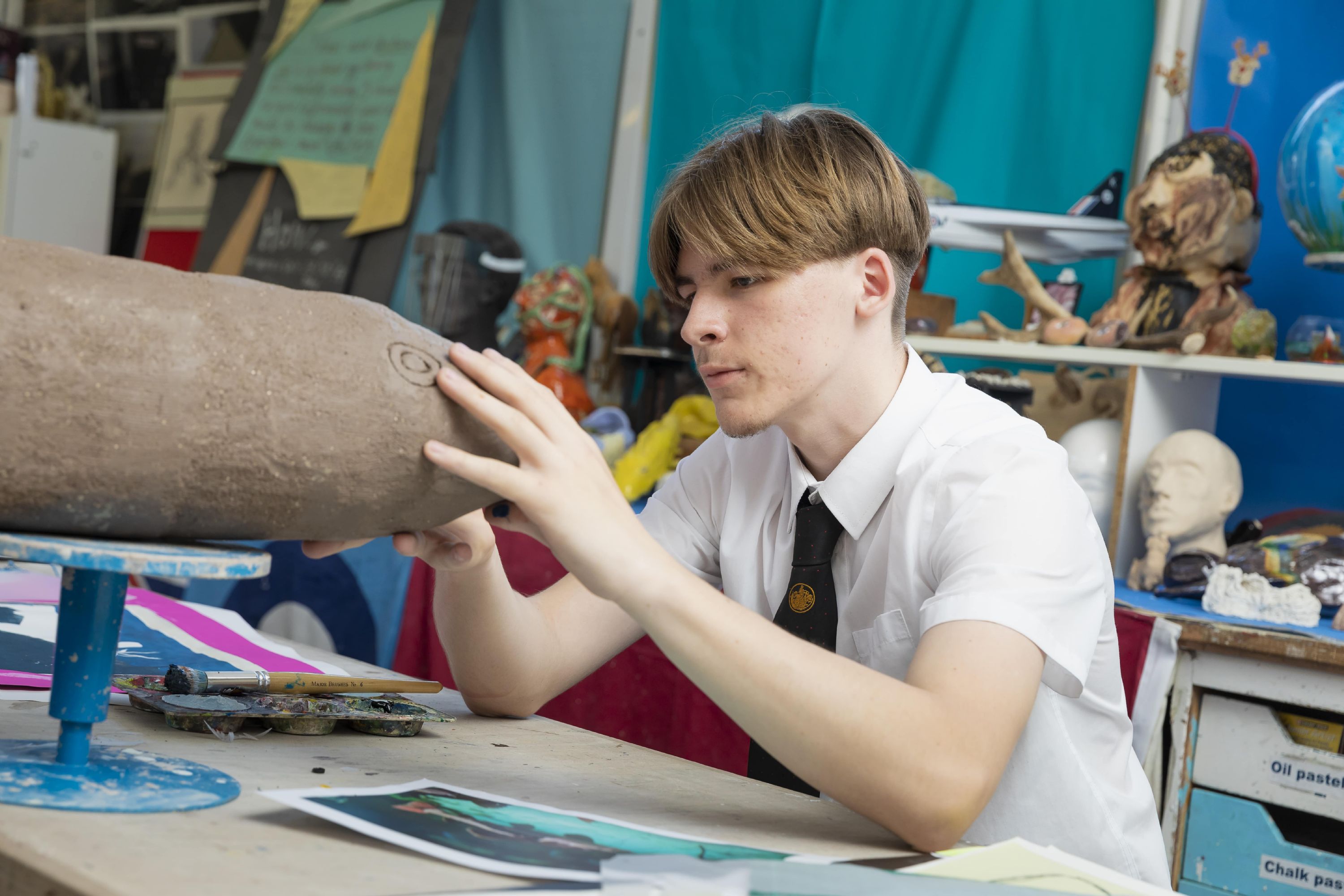
Areas of Study include:
- Sculpture
- Ceramics
- Drawing
- Casting
- Glazing
- Relief Printing
- Mould Making
GCSE Assessments
60% coursework and 40% externally set tasks.
| AQA GCSE Fine Art | AQA GCSE Graphics Art |
|
|
|---|---|---|---|
|
60% - The coursework explores various starting points and development work that will then result in a final piece. 96 Marks. |
60% - The coursework explores various starting points and development work that will then result in a final piece. 96 Marks. |
60% - The coursework explores various starting points and development work that will then result in a final piece. 96 Marks. |
|
|
40% - Unit 2 starts in January (Year 11 only). Students select 1 question from an exam paper completing the component in April during the exam period. 96 Marks. |
40% - Unit 2 starts in January (Year 11 only). Students select 1 question from an exam paper completing the component in April during the exam period. 96 Marks. |
40% - Unit 2 starts in January (Year 11 only). Students select 1 question from an exam paper completing the component in April during the exam period. 96 Marks. |
Art and Design Future Paths
Students can progress further to obtain an A Level in Art and Design (Fine Art).
Possible careers include Artist, Photographer, Illustrator, Graphic Designer, Fashion and Fashion Styling for Theatre and the Film Industry, Creative director, Typographer, Print designer, Multimedia designer (television/ set design/ production design) Production designer, Marketing Exec, Branding designer, Logo design, Front end web designer, User interface (UI) designer, Ceramics, Television and Broadcasting, Architect, Fine Artist, Craftsperson, Conservation and Art Restoration, Museum and Gallery curator.
Extra Resources
- BBC Bitesize: Art and Design
- British Museum
- National Gallery
- Royal Academy of Arts
- Tate
- Victoria and Albert Museum
